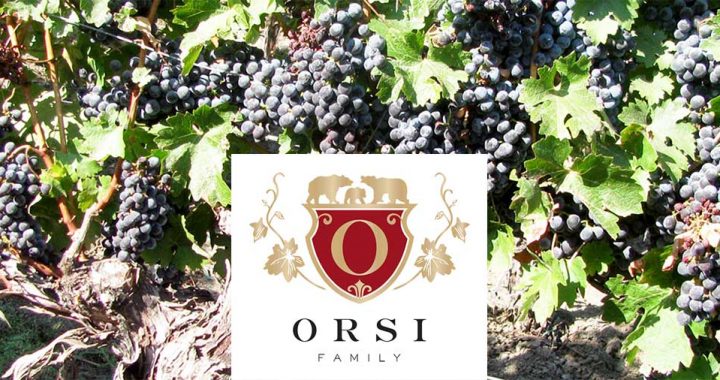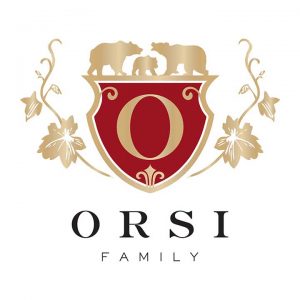Podcast: Play in new window | Download (Duration: 35:49 — 16.5MB) | Embed
Subscribe: Apple Podcasts | RSS | More
Bernie Orsi and Rusty Eddy from Orsi Family Vineyards join Steve Jaxon and Dan Berger on California Wine Country today.
Rusty Eddy’s brother is Tom Eddy, the winemaker. Rusty does public relations for the winery. Tom Eddy has a long history as a winemaker. He graduated from UC Davis in 1975 and first worked for Wente. He has had a label of his own since 1991.
They taste a 1994 Cabernet that Tom Eddy made. The grapes are from the Dr. Crane vineyard. Rusty describes a “vertical” tasting, of Tom Eddy wines, meaning one from each year 1991-1996 then six more. This 1994 is still in good shape. Dan says that in the warmer regions, the acid is not always in perfect condition, in Cabernets. 1994 was warmer, so riskier, and probably the 1995s are in better shape. But Cabernet just needs time to develop.
Orsi Vineyards is unique as a California grower of many Italian varietals, which are so abundant all over Italy but which are hardly known at all in California due to the dominance of the principal French varietals (the “usual suspects” being Cabernet Sauvignon, Chardonnay, Merlot and Pinot Noir, as well as Sauvignon Blanc).
Orsi Vineyards features Sangiovese, Aglianico, Montepulciano, Nebbiolo, Fiano, Barbera, Negroamaro, Sagrantino, Schioppettino, Primitivo and Biancolella. They also grow some Cabernet, which is also grown in Italy. These are all ready to be discovered by wine consumers who are only familiar with the other more common grape varieties.
Orsi Vineyards started with Bernie Orsi purchased a vineyard in 1990. It was in Healdsburg and was a cattle ranch. They looked into the possibility of planting grapes and were advised against it because of soil types, etc. Someone suggested he visit Rich Kunde who was growing grapes. He said there is no undesirable place to grow grapes and there was a rootstock for any soil. He decided that “4453” rootstock from France does well in the high magnesium soils in there area.
Dan asks how he came up with the Italian varieties. In 1992 or 3 he had the largest planting of 4453 rootstock, Cabernet, Chardonnay and Merlot. He found them boring. He was always fascinated traveling to Italy and found the wine excellent and he noticed you could drink it with a meal and still walk away unimpaired. He went to Ischia, off the coast of Naples, where his grandmother came from. She left in 1916, same time Steve’s grandparents left. (The family ended up in San Pedro, California, because they were fishermen.) He encountered a wine in Ischia and it turned out to be Biancolella d’Ischia. The Ischians say it is unique to their island. It went well with fish and shellfish. He wanted to import the vines so he contacted some commercial grapevine importers. He learned that they were studying two or three Biancolella plants at UC Davis, for research into pest and disease resistance. About 5 or 6 years ago he planted some, then soon after he also planted other Italian varieties, including Montepulciano, Sangiovese, Negroamaro and others.
These varietals have their own characteristics unlike the familiar French-named varietals that are more common in California.
Dan tastes a lemon flavor in the Biancolella. “This is delicious!” says Steve. “…freshness, a little minerality in the finish, bright, clean and crisp,” says Dan.
Despite the genealogy of grapes which cross national borders, the local growers, by tradition, are proud of their local varieties and take care to maintain the production and quality of any of them.
They also have a Fiano to taste. Usually southern wines are “harder” but this is delicate. These wines like Biancolella and Fiano do not travel well and are hard or impossible to find here. They are best when they are tasted fresh, close to home, and this one is.
The 1980 bottle was spoiled because it was oxidized, so Dan said, when that happens you just move on.
Schioppettino is an Italian variety (pronounced “skyo-pett-EE-no” with a K sound) in Italian. English speakers tend to pronounce “show-pett-EE-no” with a solf C.
Barry Herbst says that their Aglianico and Schioppettino are both at Bottle Barn today and there will be more Orsi Family wines there soon. This Schioppettino has good acidity but not heavy tannins. It is flavorful and has a great finish too.
Bernie met Tom Eddy when he was winemaker at Christian Brothers and took a tour there. He said growing grapes was easy, making wine took talent, but selling wine was to him the hardest. He suggested talking to Rusty who knows business and marketing.
2015 Barbera, a varietal from the Piedmont region, in the northwest. It grows well in the hills above Dry Creek. It is their most consistent wine, says Bernie. Dan says you don’t want to harvest late so you don’t lose the acidity. Bernie says it’s exactly right, it’s right there with Pinot Noir.
Bottle Barn’s Rosé tasting is coming soon, get tickets at the Bottle Barn website or on eventbrite.
Cent’anni! Cin-cin!
Cent’anni: This is a toast for birthdays. In Italian, “cent’anni” means “a hundred years” and is short for “cento di questi anni” which means “a hundred of these years.” It is important to pronounce the word “anni” with a double NN. (You would be shocked by the meaning of the word you would be saying if you were to pronounce it with only a single N sound.)
The other toast is the informal “cin-cin” which is an onomatopoeia for the sound of glasses touching during a toast.


